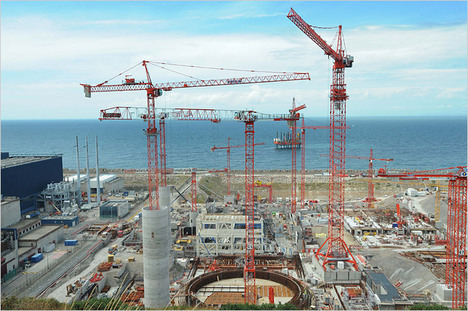 “A German ship, following a Russian icebreaker, is about to complete a shipment from Asia to Europe via Arctic waters.” Source of caption and photo: online version of the NYT article quoted and cited below.
“A German ship, following a Russian icebreaker, is about to complete a shipment from Asia to Europe via Arctic waters.” Source of caption and photo: online version of the NYT article quoted and cited below.
(p. A1) MOSCOW — For hundreds of years, mariners have dreamed of an Arctic shortcut that would allow them to speed trade between Asia and the West. Two German ships are poised to complete that transit for the first time, aided by the retreat of Arctic ice that scientists have linked to global warming.
The ships started their voyage in South Korea in late July and will begin the last leg of the trip this week, leaving a Siberian port for Rotterdam in the Netherlands carrying 3,500 tons of construction materials.
Russian ships have long moved goods along the country’s sprawling Arctic coastline. And two tankers, one Finnish and the other Latvian, hauled fuel between Russian ports using the route, which is variously called the Northern Sea Route or the Northeast Passage.
But the Russians hope that the transit of the German ships will inaugurate the passage as a reliable shipping route, and that the combination of the melting ice and the economic benefits of the shortcut — it is thousands of miles shorter than various southerly routes — will eventually make the Arctic passage a summer competitor with the Suez Canal.
“It is global warming that enables us to think about using that route,” Verena Beckhusen, a spokeswoman for the shipping company, the Beluga Group of Bremen, Germany, said in a telephone interview.
For the full story, see:
ANDREW E. KRAMER and ANDREW C. REVKIN. “Arctic Shortcut Beckons Shippers as Ice Thaws.” The New York Times (Fri., September 10, 2009): A1 & A3.
 “A Shortcut Across the Top of the World.” Source of caption and map: online version of the NYT article quoted and cited above.
“A Shortcut Across the Top of the World.” Source of caption and map: online version of the NYT article quoted and cited above.




